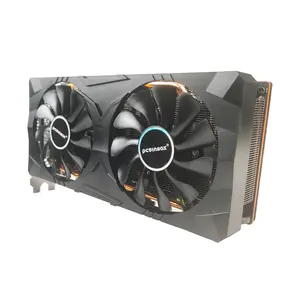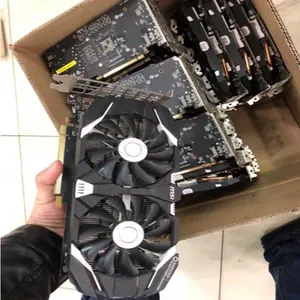A graphic card is a piece of hardware installed in a computer responsible for rendering images, videos, and games on the computer's display. Graphics cards contain a processor called a graphics processing unit (GPU) and memory that work together to perform the calculations necessary to display images on the screen.
Features of graphics cards
Memory: Graphic cards such as PCI graphics cards come with their own dedicated memory, called VRAM (Video Random Access Memory). The more VRAM a GPU contains, the more high-resolution textures and larger models it can handle. VRAM is faster than the regular system memory (RAM) and allows the mining graphic card to access the data it needs more quickly, which can result in smoother and more detailed graphics.
Clock speed: This is the speed at which the graphics card's cores operate. A higher clock speed means the GPU can perform calculations faster. A higher clock speed generally means that the graphics card can perform more calculations per second, leading to faster and smoother performance for game users and customers using it for professional visualization tasks.
Memory bandwidth: This is the amount of data that can be transferred between the graphics card and the rest of the system. A higher memory bandwidth means the graphics card can access data faster, as it can process and display more data faster.
In conclusion, graphic cards, in general, tend to reside in the higher price bracket over other similar computer accessories. Therefore, ordering graphics cards in bulk can cut down the initial investment for any hard-core gamer or bitcoin miner.
Uses of wholesale video cards
Gaming graphics cards are used to render top-tier graphics in video games, making them look more realistic and immersive. When it comes to gaming, a high-performance graphics card is essential for smooth and detailed visuals. These cards offer customers features such as ray tracing, high clock speeds, and large amounts of memory to support high-resolution and high-refresh-rate gaming.
Professional visualization: Graphic cards such as dual graphics cards are used in industries like architecture, engineering, and product design to create 3D models and simulations. These cards typically offer higher memory capacities, faster clock speeds, and more advanced features than consumer-grade graphics cards, such as support for multiple monitors, high-resolution displays, and advanced rendering technologies.
Video editing: Video editors use graphic cards such as 1080p graphics cards to perform video encoding and decoding, as well as to apply effects and filters to video footage. This can lead to faster rendering and playback times and improved stability and responsiveness when working with large or complex video files.









































 浙公网安备 33010002000092号
浙公网安备 33010002000092号 浙B2-20120091-4
浙B2-20120091-4